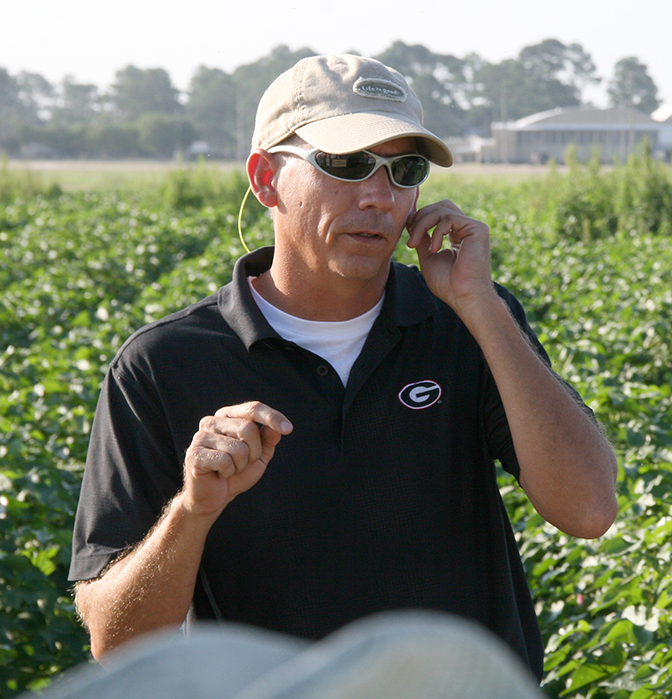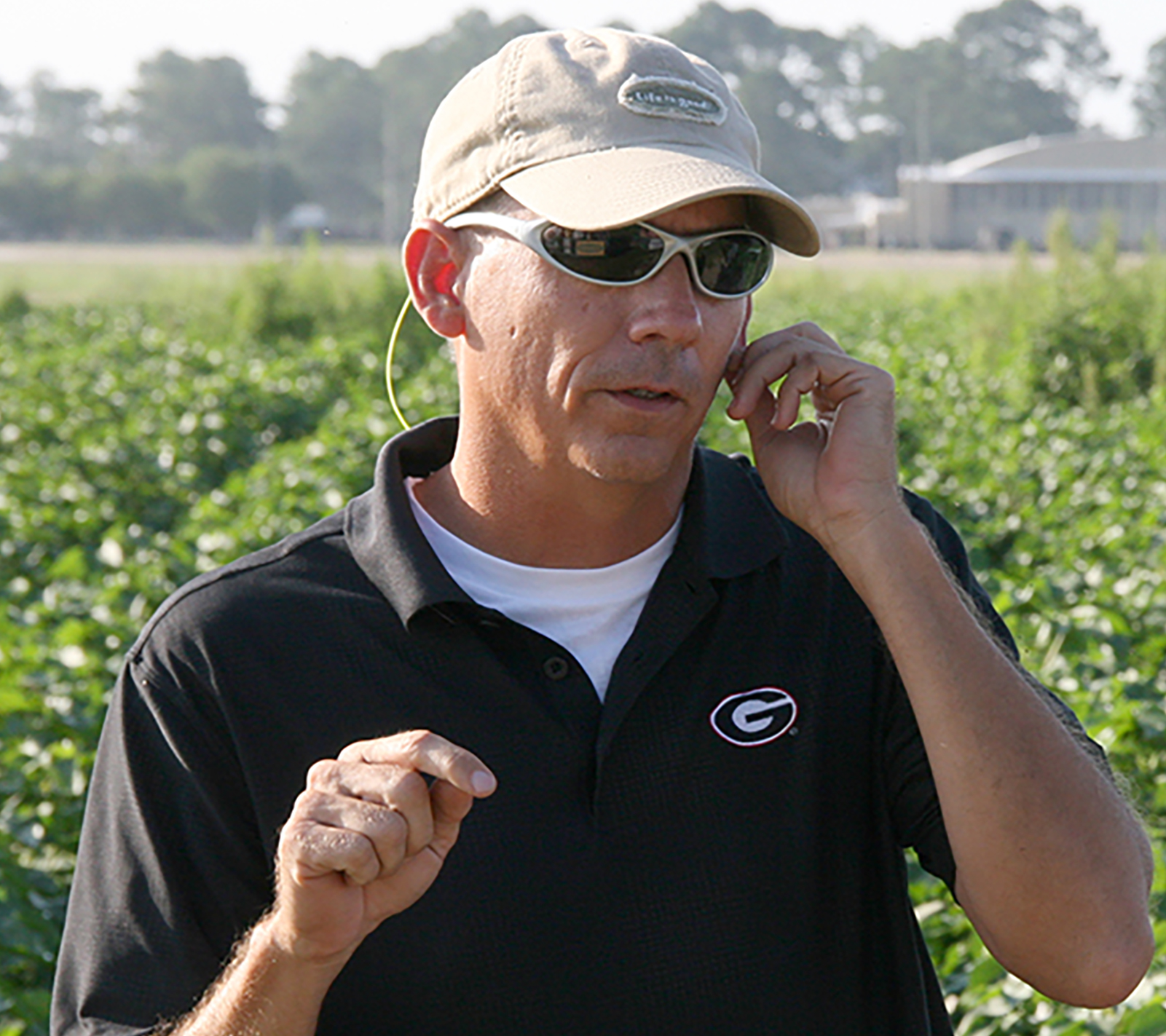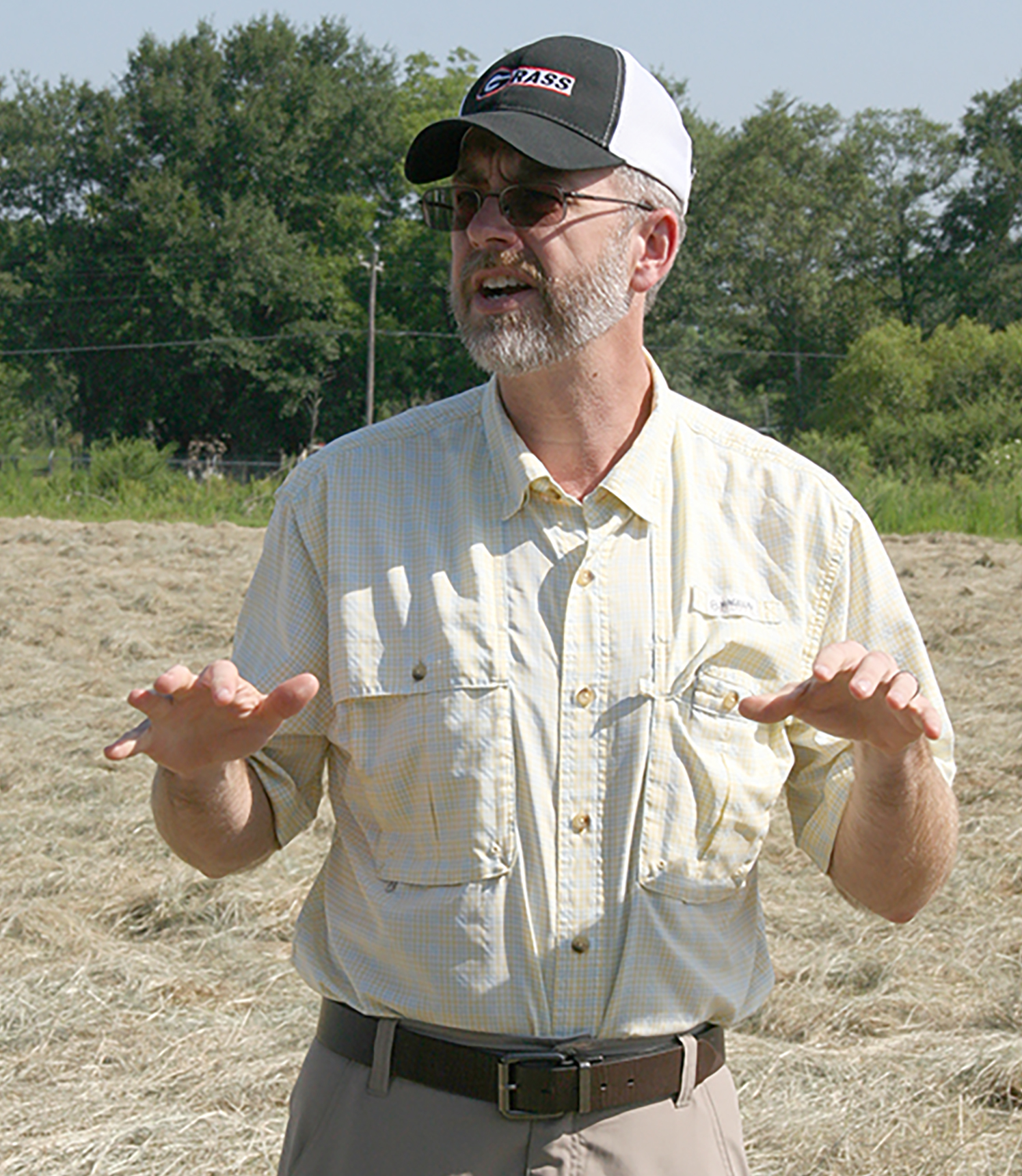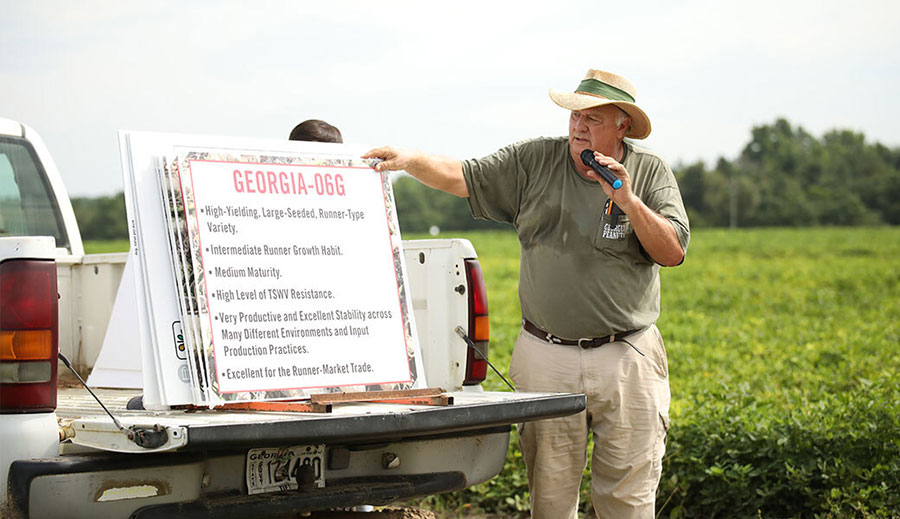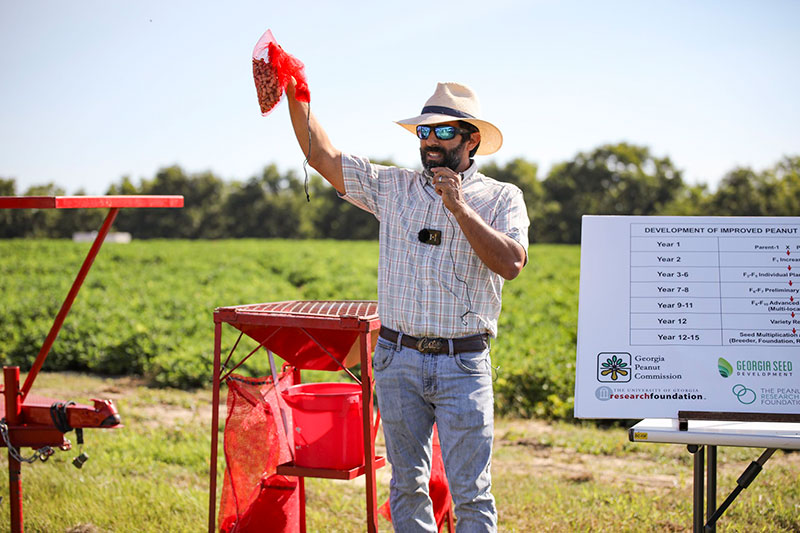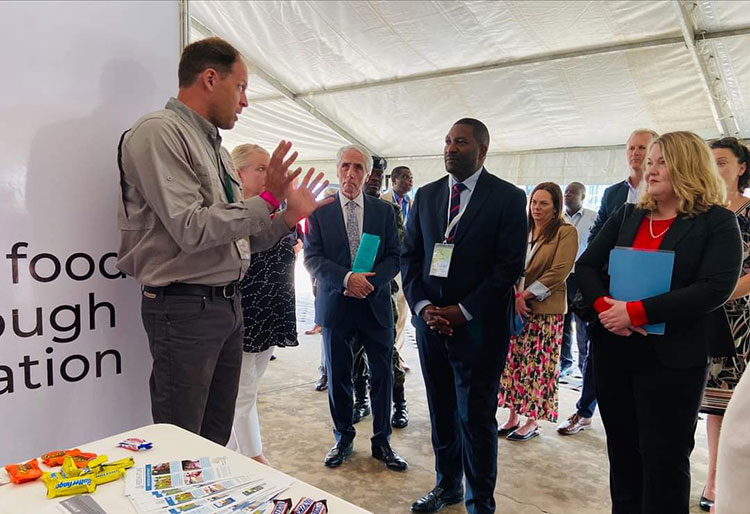The Sunbelt Ag Expo in Moultrie, Georgia, is vital to the research coordinated by the University of Georgia’s various commodity teams.
The 600-plus-acre Darrell Williams Research Farm, on the expo grounds, has an open door policy with UGA scientists, serving as a breeding ground for research that impacts farmers in Georgia and the Southeast. This research will be on display when the expo hosts its field day on Thursday, July 14.
“The Sunbelt Ag Expo grounds are the most visible demonstration fields in the Southeast. So many people from across the region visit the expo and the annual field day, we can literally demonstrate our research and development work in front of hundreds of thousands of people,” said Dennis Hancock, UGA Cooperative Extension forage specialist. Hancock is working with Tim Grey, UGA weed scientist, on research involving different types of herbicides to ensure that the herbicides do not increase the susceptibility of bermudagrass to leaf spot disease.
Hancock represents one of six different research programs on display at this year’s field day. Scientists representing cotton, peanut, weed, vegetable and forage research will speak to field day attendees and explain the statewide impact of their research.
“Conducting research at the Sunbelt grounds is important because it’s a great way to showcase field research and demonstrations to growers and other interested parties at events like the field day and the Sunbelt Ag Expo in October,” said Colquitt County UGA Extension Coordinator Jeremy Kichler. “It's a great opportunity for a county agent to conduct research in order to generate production information for Colquitt County producers.”
Kichler’s projects are based on questions he receives from growers every year. Production questions pertaining to cotton topics — on-farm cotton variety trials, effects of plant growth regulators on different cotton varieties and cotton defoliation evaluations — grow the research program Kichler runs with UGA cotton agronomist Jared Whitaker. In addition to cotton, Kichler studies soybean and sugarcane aphid insecticides. He hosts a watermelon production system demonstration with assistance from UGA Extension vegetable horticulturist Tim Coolong.
Colquitt County is the top vegetable-producing county in Georgia. Coolong is studying the pivot-irrigated watermelons on narrow row plastic versus drip-irrigated watermelons on raised bed plastic. He is also researching the impact of irrigation on watermelons in terms of productivity, total yields and length of time the plants hold up after picking. Georgia growers use both pivot and drip irrigation systems, so comparing the two seemed logical to Coolong.
“We chose watermelons because they are so widely planted in Georgia, and we felt we wanted to have a presence at the field day in a county where vegetable production is a high priority,” Coolong said.
UGA Extension weed agronomist Stanley Culpepper uses his allotted 22 acres on the expo grounds to develop an effective weed management program for 2,4-D-tolerant cotton, dicamba-tolerant cotton and standard cotton technologies. He is determining the different environmental factors that influence crop injury in herbicides. He is also working to reduce herbicide use by implementing integrated programs with cover crops like rye and clover.
“Sunbelt is one of my more critical sites because it allows me to do large-acreage experiments that more closely relate to a grower’s world,” Culpepper said.
Along with Culpepper, Glen Harris, a UGA Extension soils and fertility specialist and fellow member of UGA Tifton’s Cotton Team, is studying the effects of fertilizer treatments on different crops, specifically cotton, on the expo grounds. Sulfur-based fertilizer, foliar potassium and sidedress nitrogen fertilizer are all part of Harris’ research, which is replicated every year.
“I treat the Sunbelt grounds as another experiment station where I can conduct good cotton work. I know the location and it’s very visible to a lot of people. I get some good, replicated research data,” Harris said. “I’m able to do detailed, randomized, replicated small-plot research.”
Jared Whitaker considers the expo grounds extremely valuable in regard to cotton production. He develops plant growth regulator regimens for various cotton varieties and evaluates cotton variety performance.
“Numerous research projects are conducted each year here to help the UGA Cotton Team answer real questions that producers have and address the timeliest, most important issues to help producers keep cotton profitable,” Whitaker said.
According to the UGA Center for Agribusiness and Economic Development, cotton was grown on more than 1.3 million Georgia acres and netted $964.6 million in farm gate value in 2014.
Peanuts are another commodity being studied at the expo grounds. UGA Extension peanut agronomist Scott Monfort is researching the response of newly available varieties to a new growth regulator, prohexadione calcium. The trial will produce data about varietal response to the growth regulator in relation to plant growth, yield and grade. Diseases will also be evaluated between the varieties.
“We conduct research trials at the expo grounds to broaden our field day efforts, which involve showing growers some of our leading agronomic research, in the hopes of answering growth issues and increasing overall productivity,” Monfort said.
According to the UGA Peanut Team’s “2016 Peanut Update,” Georgia peanut farmers planted 790,000 acres in 2015, up 32 percent from the previous year. The acreage yielded an average of 4,400 pounds per acre.

